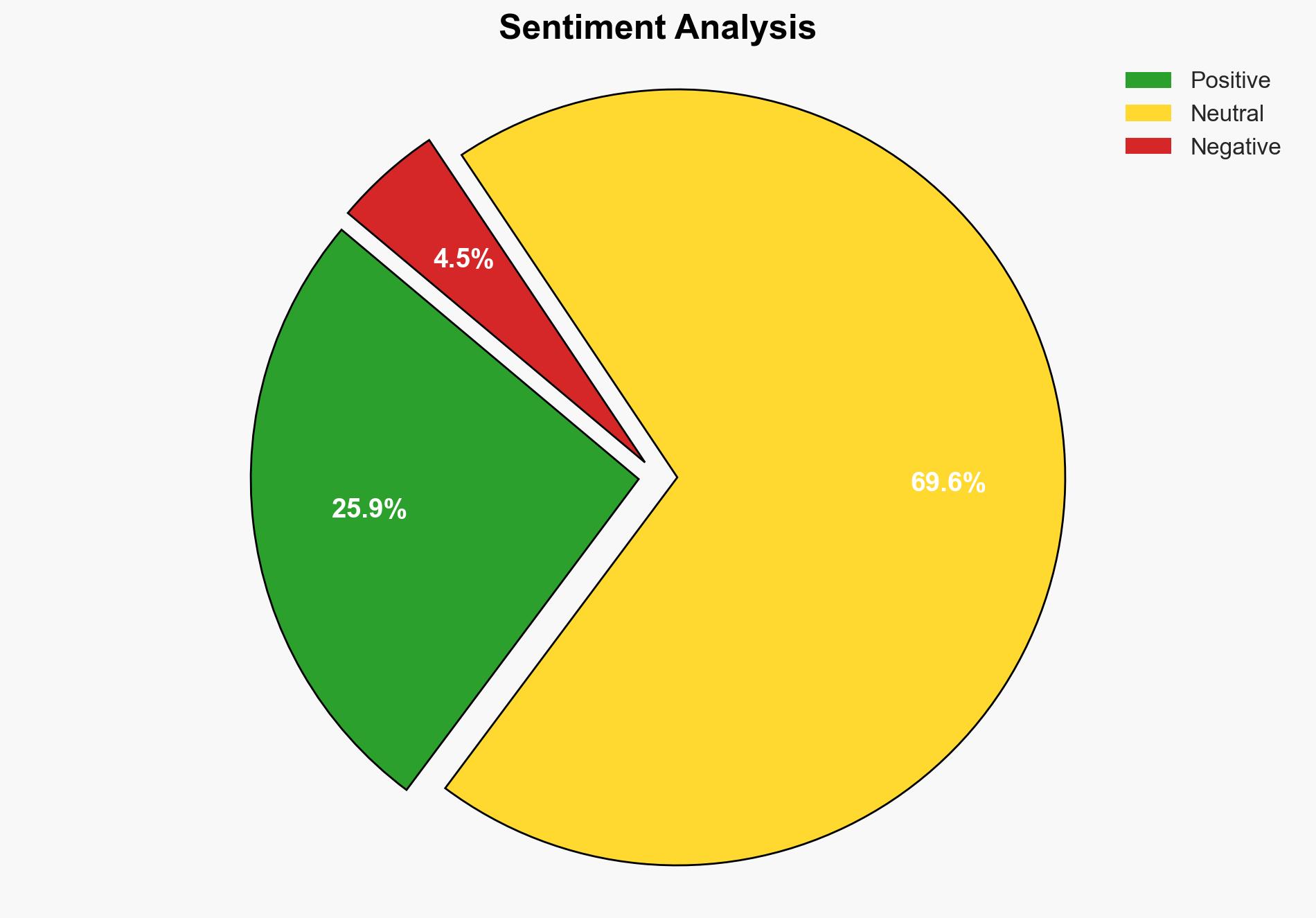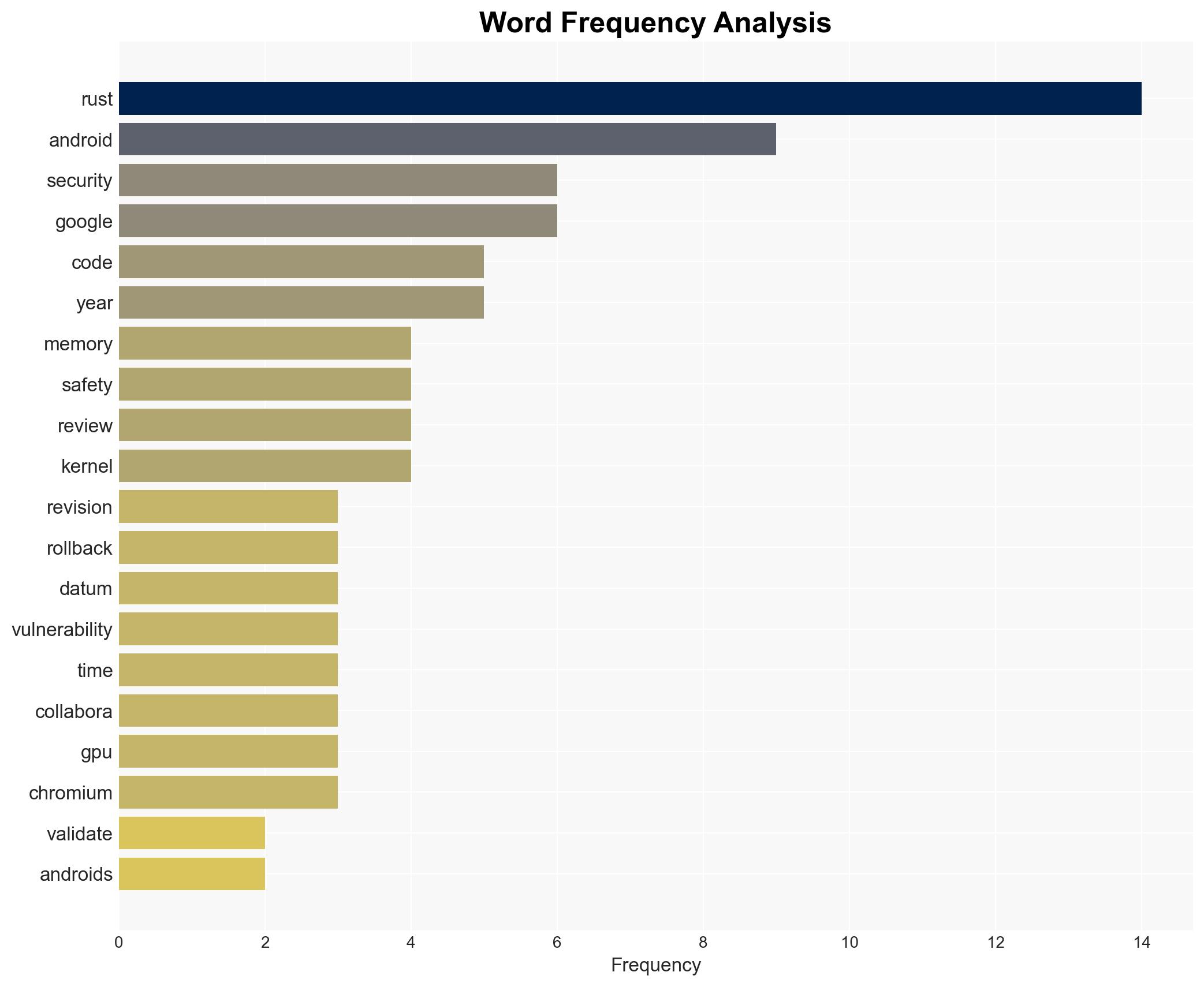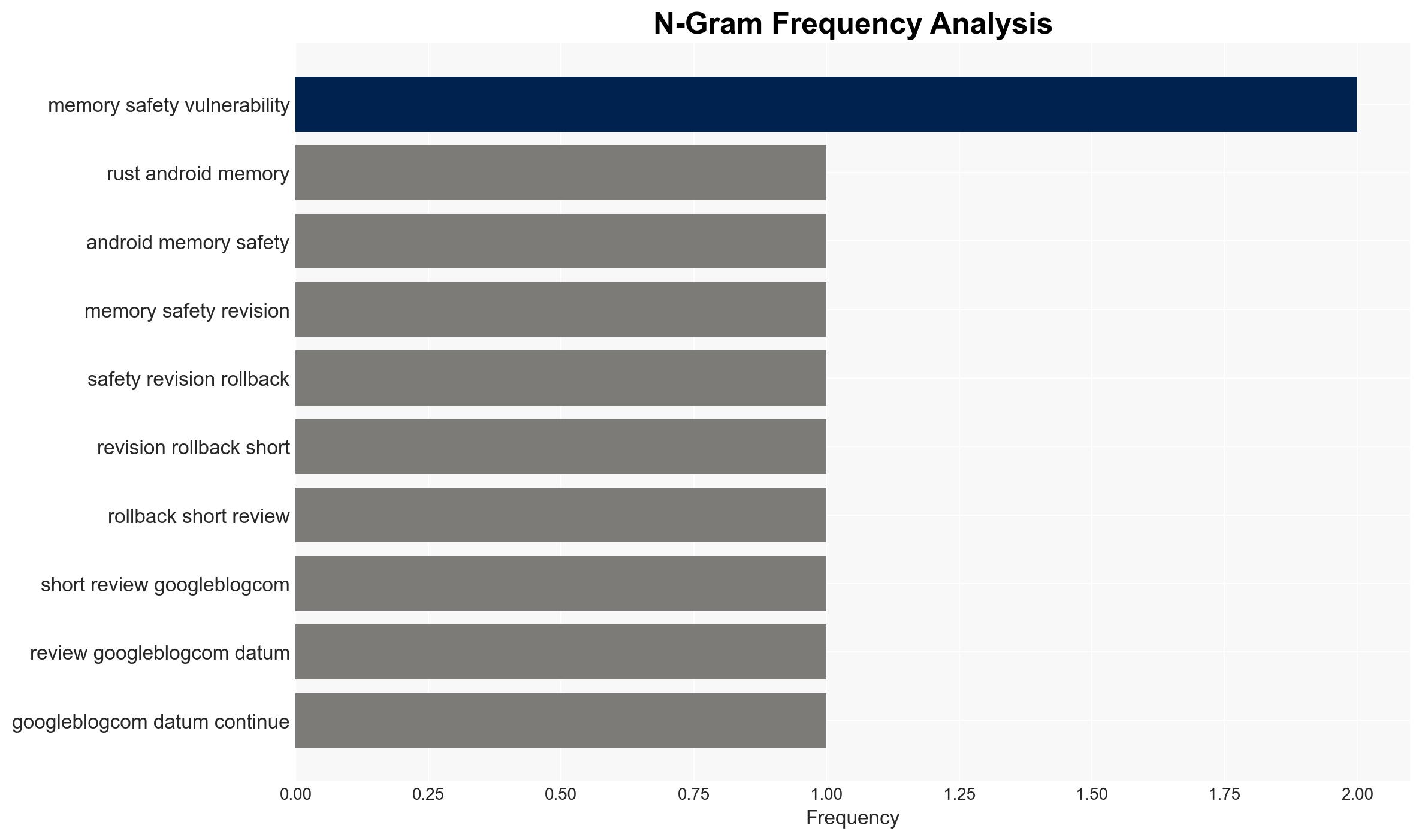Rust in Android More Memory Safety Fewer Revisions Fewer Rollbacks Shorter Reviews – Slashdot.org
Published on: 2025-11-17
AI-powered OSINT brief from verified open sources. Automated NLP signal extraction with human verification. See our Methodology and Why WorldWideWatchers.
Intelligence Report: Rust in Android – Memory Safety and Development Efficiency
1. BLUF (Bottom Line Up Front)
With a high confidence level, the integration of Rust into Android’s development process is likely to enhance memory safety and development efficiency, reducing vulnerabilities and improving code stability. Recommended actions include continued investment in Rust development and monitoring for long-term impacts on security and performance.
2. Competing Hypotheses
Hypothesis 1: The adoption of Rust will significantly reduce memory safety vulnerabilities in Android, leading to fewer revisions and rollbacks, thus improving overall software delivery and security.
Hypothesis 2: The integration of Rust may not yield significant improvements in memory safety or development efficiency due to potential integration challenges and the learning curve associated with a new programming language.
Evidence supports Hypothesis 1 as the most likely scenario due to reported reductions in vulnerabilities and positive feedback from Google engineers. However, potential challenges in widespread adoption and integration remain uncertainties.
3. Key Assumptions and Red Flags
Assumptions: It is assumed that the data provided by Google is accurate and that the reported improvements are directly attributable to Rust. The assumption also includes that developers can effectively transition to Rust without significant productivity loss.
Red Flags: Potential bias in self-reported data from Google engineers. Lack of independent verification of the reported improvements. The possibility of overestimating the impact of Rust due to initial enthusiasm.
4. Implications and Strategic Risks
The successful integration of Rust could set a precedent for other software platforms, potentially shifting industry standards towards languages prioritizing memory safety. However, failure to achieve expected outcomes could result in wasted resources and delayed feature rollouts. Cybersecurity risks could escalate if vulnerabilities are not adequately addressed during the transition period.
5. Recommendations and Outlook
- Continue investing in Rust training and development resources to ensure a smooth transition and maximize potential benefits.
- Implement independent audits to validate the reported improvements in memory safety and development efficiency.
- Monitor for potential integration challenges and address them proactively to prevent disruptions.
- Best-case scenario: Rust integration leads to significant improvements in security and efficiency, setting a new industry standard.
- Worst-case scenario: Integration challenges result in minimal improvements, resource wastage, and delayed feature rollouts.
- Most-likely scenario: Gradual improvements in memory safety and efficiency, with some initial challenges that are eventually overcome.
6. Key Individuals and Entities
Google software engineers involved in the Rust integration project.
7. Thematic Tags
Cybersecurity, Software Development, Programming Languages, Android, Rust, Memory Safety
Structured Analytic Techniques Applied
- Adversarial Threat Simulation: Model and simulate actions of cyber adversaries to anticipate vulnerabilities and improve resilience.
- Indicators Development: Detect and monitor behavioral or technical anomalies across systems for early threat detection.
- Bayesian Scenario Modeling: Quantify uncertainty and predict cyberattack pathways using probabilistic inference.
Explore more:
Cybersecurity Briefs ·
Daily Summary ·
Support us
·





